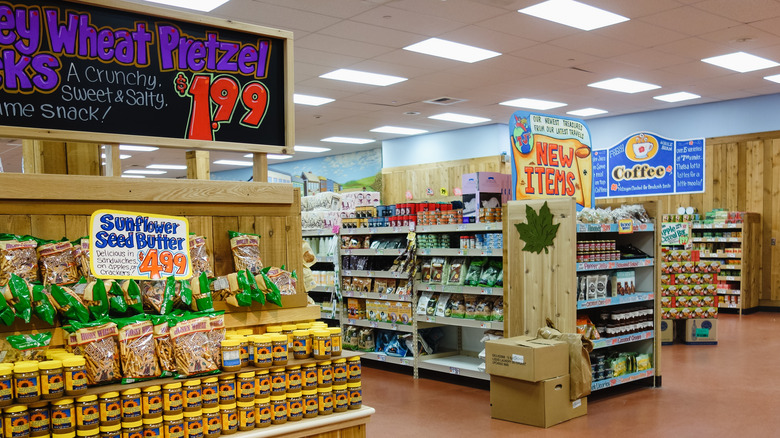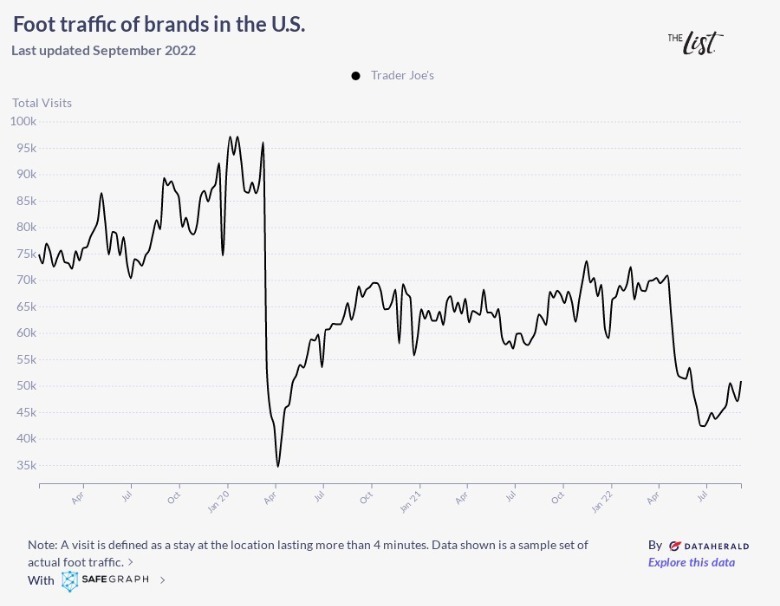This May Be The Reason Trader Joe's Foot Traffic Just Took A Nosedive
From the organic produce to the frozen food aisle, there is something magical about Trader Joe's. When you walk in, you are greeted by the scent of fresh flowers and hand-drawn signs that tell you all about the incredible deals on groceries you didn't know you needed. Friendly employees cheer as they ring the Trader Joe's checkout bell and ask you sincerely how your day is going. It's going great now, because you're about to go home with a cart full of seasonal treats and goodies that can only be found at your local Trader Joe's.
Trader Joe's foods seem to have cult-like followings; some loyal customers have even dedicated entire social media accounts and podcasts to finding the best products and hacks Trader Joe's has to offer. But recently, data shows that the popular grocer has been struggling to get shoppers through their doors. To find out just how well Trader Joe's has been doing since the pandemic, The List created a graph via Data Herald that tracked the store's average monthly foot traffic over the past two years.
Trader Joe's might need more than pumpkin spice hummus to win back shoppers this season
According to The List's graph, Trader Joe's has seen a few serious drops in the past few years. Pre-pandemic, the grocery store expected to see between 80,000 and 95,000 shoppers each month. As the store attempted to recover after the shutdowns in spring of 2020, foot traffic dropped by about 20,000 visitors. Trader Joe's saw another drastic dip in shoppers in April 2022, as inflation began to rise and shoppers had to make tough decisions about where they could afford to shop for their groceries.
Another one of Trader Joe's downfalls could be their lack of representation in certain neighborhoods. According to ScrapeHero, the grocery retailer has over 550 locations in 43 states across the United States, but where they decide to open up their stores are dependent on specific demographics that leave lower-income areas behind. An analysis by AggData found that Trader Joe's targets higher-income areas who make an average of $10,000 more than the median income, per Freakonomics. Even with the extremely reasonable prices on goods, many budget shoppers are not within a close proximity to a Trader Joe's, making it more costly for them to shop there. As inflation continues to rise, foot traffic data reveals that American shoppers are favoring wholesale clubs and discount stores that provide a majority of goods in one store for a low price, with locations that are a close proximity to their homes.

